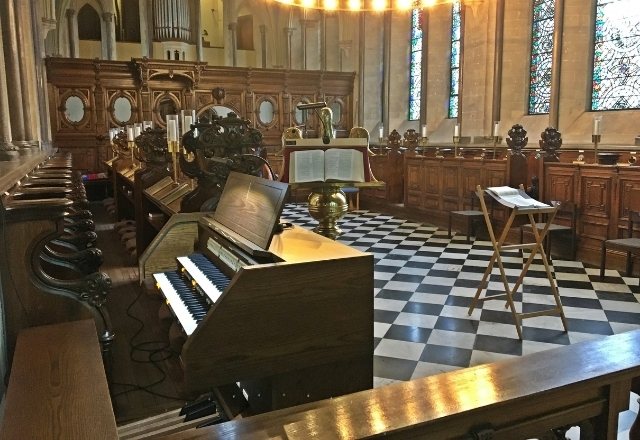It was on almost the eve of the first lockdown in March 2020 that Richard Goodall and I visited Lambeth Palace Chapel to explore the options for a digital organ there. Here 15 months later is the story of the installation in this most important historic London building, which is also the residence of the Archbishop of Canterbury.
About 2 years ago now I admit that I read with envy of the installation of a competitor’s instrument in St Peter’s in Rome. I was rather determined that we needed a similar ‘landmark’ instrument. We already had Canterbury Cathedral on our past client list so my mind turned to the Sistine Chapel as perhaps of similar standing. Low and behold only months later we had the call from Lambeth and can now boast (after some unavoidable delay) an instrument in the private chapel of the head of the Anglican Church. In some sense then the UK counterpart to the Sistine Chapel!
Lambeth Palace – the London home of the Archbishop of Canterbury
Lambeth Palace is the Archbishop of Canterbury’s official residence. It comprises land originally owned by the Convent of St Andrew of Rochester sold in part to Archbishop Haldwin of Canterbury in 1190. Archbishop Hubert Walter bought the rest of the Manor in 1197 and built a house by the river roughly opposite the Palace of Westminster. This house was for his canons and he built his own house next door. Details of these early buildings are very scarce but it is known that there was a chapel by 1228 whose vaulted crypt still lies under the current chapel.
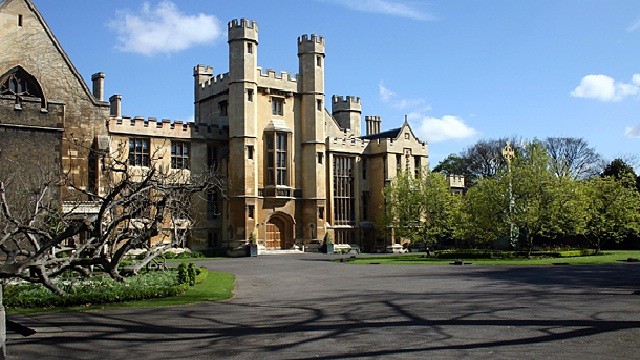
In 1381 the rebels ransacked the palace, burning books and furniture. Simon Sudbury, the Archbishop, fled to the Tower of London but was followed and killed. Archbishop Chichele built a water tower in 1434-5. This tower was and still is called the Lollards’ Tower as it is said that the Lollards were imprisoned there.

In the 1480s a gatehouse was built and it was from this gatehouse that the local poor received charity three times a week. This charity, usually food, continued until 1842 when it was replaced by cash grants. Thomas More was questioned in the Guard Room of Lambeth Palace by Thomas Cromwell in 1534.
The organ installation at Lambeth Palace
The Palace has played an important role in the history of our country and it is a delight that they have selected Viscount for what is hoped will be a temporary instrument, while a more permanent solution is found (and funded) for the organ gallery space which is rather small.
Initial thought to replace the pipe organ console with ours was quickly dismissed as too difficult and so space in the main chapel floor had to be found. This was available on the south side at the east end of the stalls. Albeit tight and requiring the floor level to be raised with a plinth made by Palace staff, our Envoy 23 in dark oak fits in well. You might be forgiven for thinking it had been custom made to fit the available space.
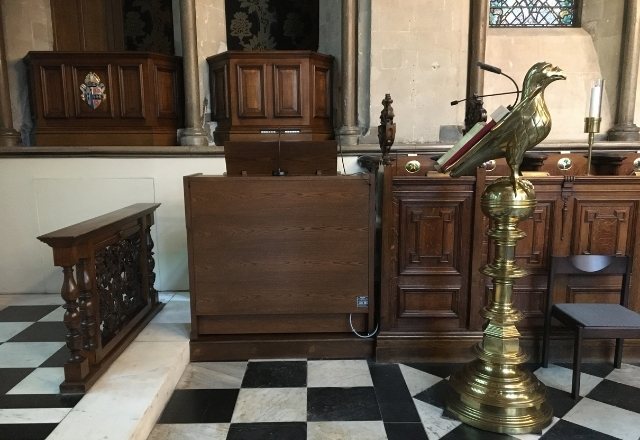
The Envoy organ plays through 4 speakers placed in the west gallery where we had to build a platform to keep them above the blower and wind reservoirs that filled the floor space. Even though the pipe organ is totally unplayable, we thought it worthwhile to do the installation without making any alterations to the pipe organ setup.
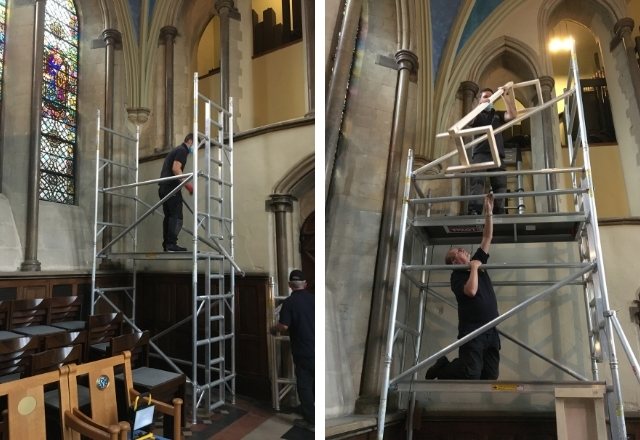
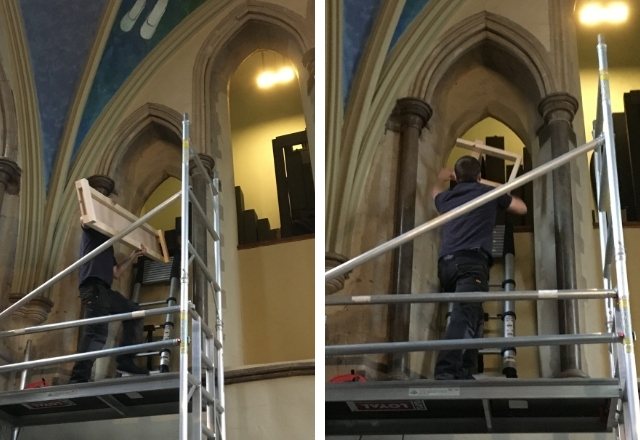
This required a little bit of creative onsite joinery, especially as access to this space was impossible before we arrived to carry out the final installation. A little bit of educated guesswork and much past experience meant the tools and material carried to site on the day were more than adequate for the job in hand.
A small joinery shop was set up in the room adjacent to the chapel where this work was carried out. It was decided not to use a sub bass with this installation as only a small 16ft pedal division was needed and space for the speaker was very difficult to find.
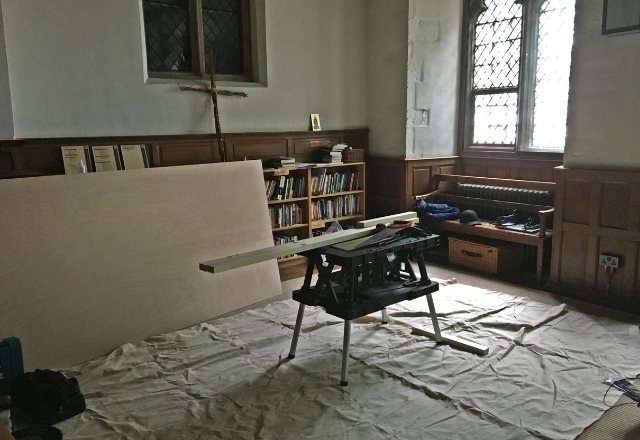
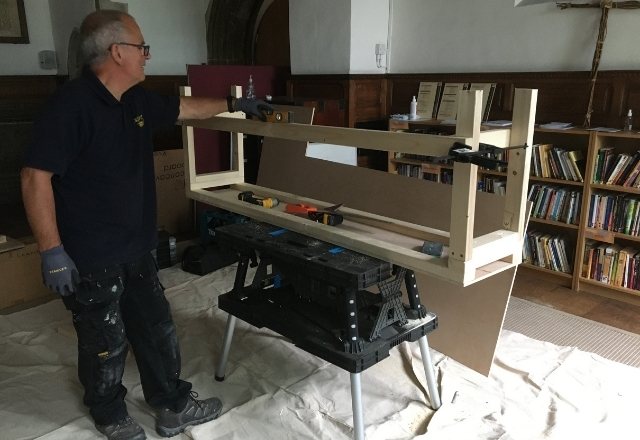
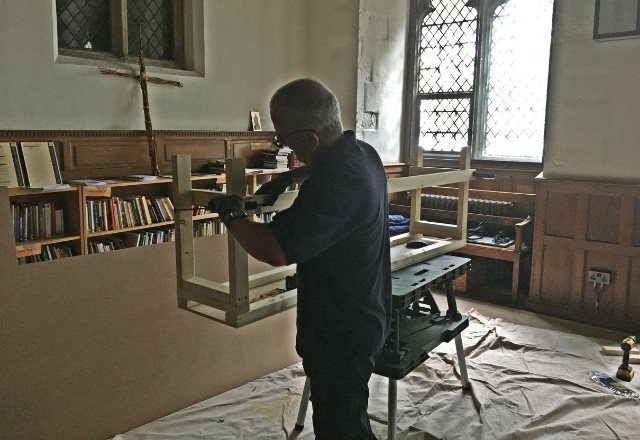
This work was completed just in time for a wedding scheduled in the chapel that would otherwise have had to hire an organ for the day. So with a bit of luck and good planning, that wedding can proceed without the complication of finding an organ just for the day. Though of course we were ready for that eventuality too!
I have had a passion for church organs since the tender age of 12. I own and run Viscount Organs with a close attention to the detail that musicians appreciate; and a clear understanding of the benefits of digital technology and keeping to the traditional and emotional elements of organ playing.
